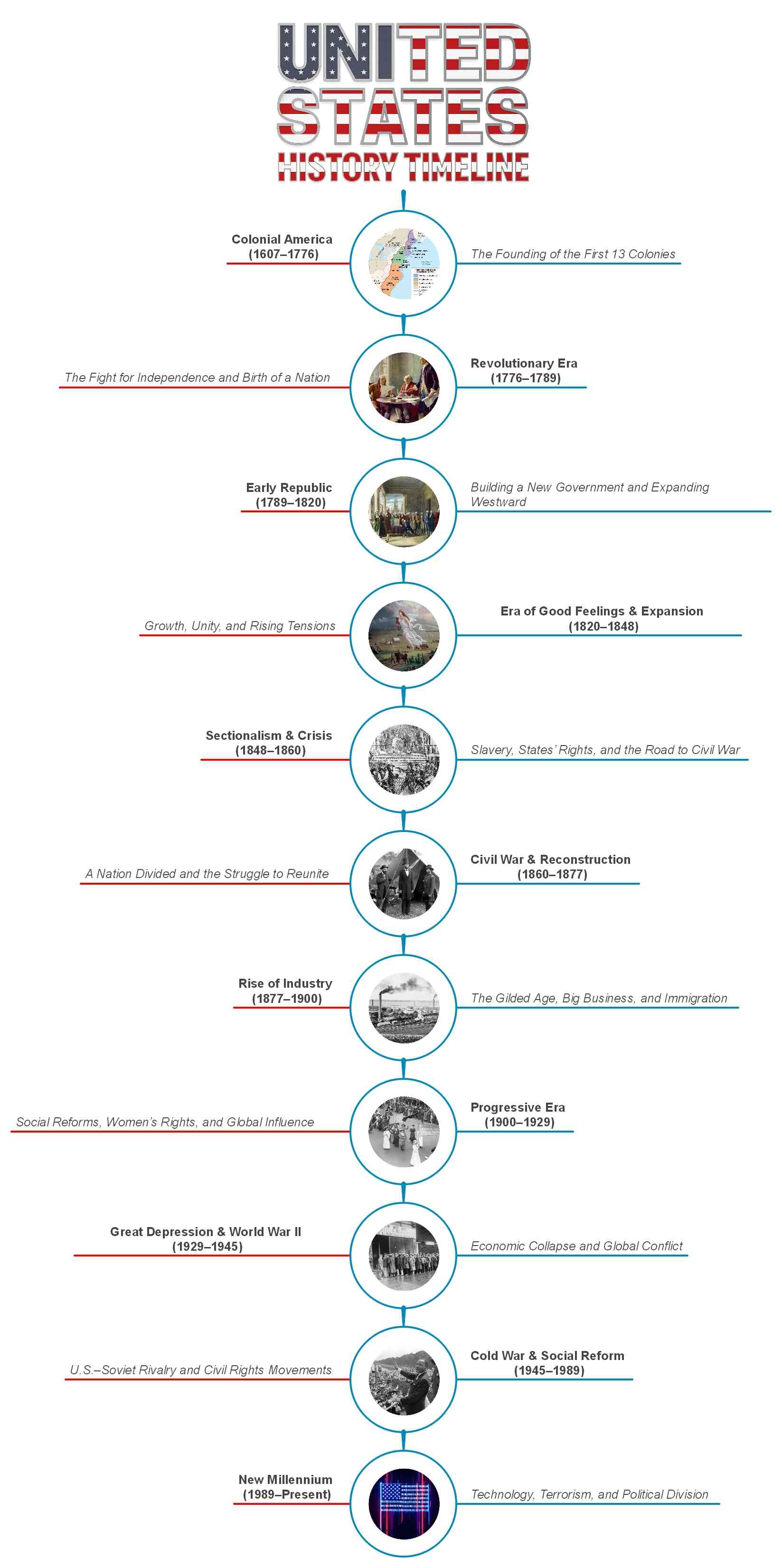The United States wasn’t always "united". And it definitely wasn’t always "America". Long before the first colonists arrived, this land was home to Native nations. They had deep roots, rich cultures, and powerful traditions.
Then came the settlers. By the 1600s, explorers from England, France, Spain, and the Netherlands were carving out territory. Life was hard. Change was fast. But it was the British colonies - thirteen of them - that grew the fastest.
They started to feel different. More independent. When Britain tightened control, the colonies pushed back. A revolution broke out. And a new nation was born.
It was bold. It was risky. But it worked. The U.S. Constitution became its guide. And the country began a long, winding journey through growth, conflict, and reinvention.
This timeline is all about U.S. history. And it tells the incredible story of how the nation was built, challenged, and changed.
In this article
Part 1: United States History & Timeline
The United States wasn’t built in a day. It took centuries of conflict, courage, and change. From fighting for freedom to fighting for equality, every era tells a powerful story.
From 1607 to today, this timeline tells the story. Watch how America rose, faced setbacks, and kept moving forward.
Colonial America (1607-1776)
Colonial America was the start of everything.
In 1607, Jamestown became the first successful English settlement. Life was hard; hunger, disease, and conflict were daily struggles. But slowly, more colonies appeared, each with its own culture and purpose.
Some came for gold, others for religious freedom. Thirteen colonies grew along the Atlantic coast. But they weren’t free. Britain taxed and controlled trade. Colonists began to push back. “No taxation without representation” became the rallying cry. By the 1770s, the colonies were done playing nice. Independence was in the air, and the American Revolution was about to begin.
Revolutionary Era (1776-1789)
In 1776, the colonies made their boldest move; they declared independence. The American Revolutionary War followed. It was tough, bloody, and uncertain. George Washington led the ragtag Continental Army. Somehow, against the odds, they won.
After the war, things got tricky. The first U.S. government under the Articles of Confederation was weak and messy. So, in 1787, leaders created a stronger foundation - the Constitution. It balanced powers and set the rules for a brand-new nation. George Washington became the first president in 1789. America was young, bold, and ready to try something never done before: a republic built on the idea of liberty for all.
Early Republic (1789-1820)
America was finding its feet. Washington set the tone on two terms: peaceful leadership and no kings. But politics heated up fast. Federalists and Democratic-Republicans clashed over how much power the government should have.
In 1803, the Louisiana Purchase doubled the size of the country. Then Lewis and Clark went exploring, meeting new tribes and mapping wild landscapes. But troubles came too.
The War of 1812 tested America’s strength again. After a rocky start, the U.S. held its own. By 1820, America was still young but growing. People were hopeful. The future looked big and full of promise. It was only the beginning.
Era of Good Feelings & Expansion (1820-1848)
Things felt peaceful after the War of 1812. The country was united, at least on the surface. President Monroe’s era was called the “Era of Good Feelings.” But trouble was growing, especially over the issue of slavery.
Expansion was the big theme. Canals, railroads, and new roads connected the growing country. People rushed west, chasing land and opportunity. But Native Americans paid the price. The 1830 Indian Removal Act led to the Trail of Tears, forcing thousands from their homelands. Even with booming growth, the nation was divided. Slavery, states’ rights, and land were brewing storms. The peace wouldn’t last forever.
Sectionalism & Crisis (1848-1860)
America kept expanding, and so did its troubles. New land meant new arguments - especially over slavery. Would it spread west? The Compromise of 1850 tried to settle things, but just made everyone angrier.
Violence broke out in Bleeding Kansas, where people fought over slavery with guns. The Dred Scott decision shocked many- slaves were ruled property, not citizens. Abraham Lincoln’s rise scared the South. Trust was gone. North and South barely spoke the same language anymore. In 1860, Lincoln won the presidency. That was the final straw. One by one, Southern states seceded. The country was on fire, and civil war was next.
Civil War & Reconstruction (1860-1877)
The Civil War tore America apart. From 1861 to 1865, brother fought brother. Over 600,000 died. Major battles like Gettysburg and Vicksburg turned the tide. Lincoln’s Emancipation Proclamation gave the war a moral cause that end slavery.
Victory came, but it cost Lincoln his life. He was assassinated just days after the war ended. The country then entered Reconstruction. The 13th, 14th, and 15th Amendments aimed to bring equality. But progress was slow. Resistance in the South was fierce. White supremacist groups rose. By 1877, federal troops left the South. Reconstruction ended. The dream of equality faded. The fight was far from over.
Rise of Industry (1877-1900)
After the war came growth and greed. This was the Gilded Age. Big business boomed. Steel, oil, and railroads took off. Titans like Rockefeller and Carnegie ruled the economy. But workers paid the price.
Long hours. Low wages. Dangerous jobs. Cities grew fast but were overcrowded and dirty. Immigrants flooded in, chasing the American Dream. Labor strikes and protests spread. The government slowly stepped in, passing the Pendleton Act and the Interstate Commerce Act. Native Americans lost even more land. The Dawes Act tried to erase tribal life. America was richer than ever, but also more unequal. Something had to give. And it would soon.
Progressive Era (1900-1929)
The 20th century started with big changes. People were tired of corruption, inequality, and industrial greed. The Progressive Era pushed for reform. Journalists called “muckrakers” exposed the worst of society. Leaders like Theodore Roosevelt took action.
World War I broke down in the 1910s and Europe became the battlefield. The US wasn't involved except for selling weapons and other resources to both sides of the war.
Laws improved working conditions, broke up monopolies, and gave voters more power. Women fought hard and finally won the right to vote in 1920. The US became a global power after building the Panama Canal and winning wars. Things looked bright. But underneath, cracks remained. The roaring 1920s brought jazz, wild spending, and rising debt. And no one saw the crash that was coming.
Great Depression & WWII (1929-1945)
In 1929, the stock market crashed, and everything changed. Banks failed. Jobs vanished. Families lost homes. The Great Depression gripped the nation. Franklin D. Roosevelt’s New Deal created jobs, safety nets, and hope. But recovery was slow.
Then came WWII. In 1941, Japan bombed Pearl Harbor. America entered the war. Factories roared to life. Women filled jobs men left behind. The U.S. became the “arsenal of democracy.” Victory came in 1945 - but at a cost. The war ended with the atomic bomb. Millions were dead. The U.S. emerged as a superpower, but the world had changed forever. A new kind of war was beginning.
Cold War Era (1945-1989)
After WWII, the U.S. and Soviet Union became rivals. It wasn’t a shooting war - it was a Cold War. Fear of nuclear war, spies, and communism ruled the era. But the fight wasn’t just overseas.
At home, Americans demanded change. The Civil Rights Movement fought Jim Crow laws. Leaders like Martin Luther King Jr. led marches for justice. The 1960s brought protests, assassinations, and the Vietnam War. In the 1970s, Watergate rocked trust in government. The 1980s saw a shift. Ronald Reagan led with bold ideas and big defense spending. The Cold War finally ended in 1989, when the Berlin Wall fell.
New Millennium (1989-Present)
The world changed fast. In the 1990s, America saw tech explosions, peace talks, and economic growth. Bill Clinton led during a booming economy. But 9/11 changed everything in 2001. The U.S. entered a long War on Terror.
Barack Obama made history in 2008 as the first Black president. But political divisions grew. Donald Trump’s term shook norms and led to a violent Capitol riot after the 2020 election. Joe Biden took office during a pandemic, facing challenges like inflation and global instability.
By 2025, America will remain divided, but resilient. The story isn’t over. History, as always, is still being written.
Part 2: How to Make the US History Timeline in EdrawMind?
Yes, the US has gone through a long period of evolution. But did you know that making the timeline is easy and only takes a few minutes? Yes, you can make it with EdrawMind AI Timeline Maker, a powerful and easy-to-use diagramming tool that lets you make engaging timelines and mind maps with endless customization options.
That said, let’s look at how to make the US history timeline in EdrawMind:
Step 1: Getting Started
Launch EdrawMind or just try EdrawMind online and log in. Click Create > Local MindMap.
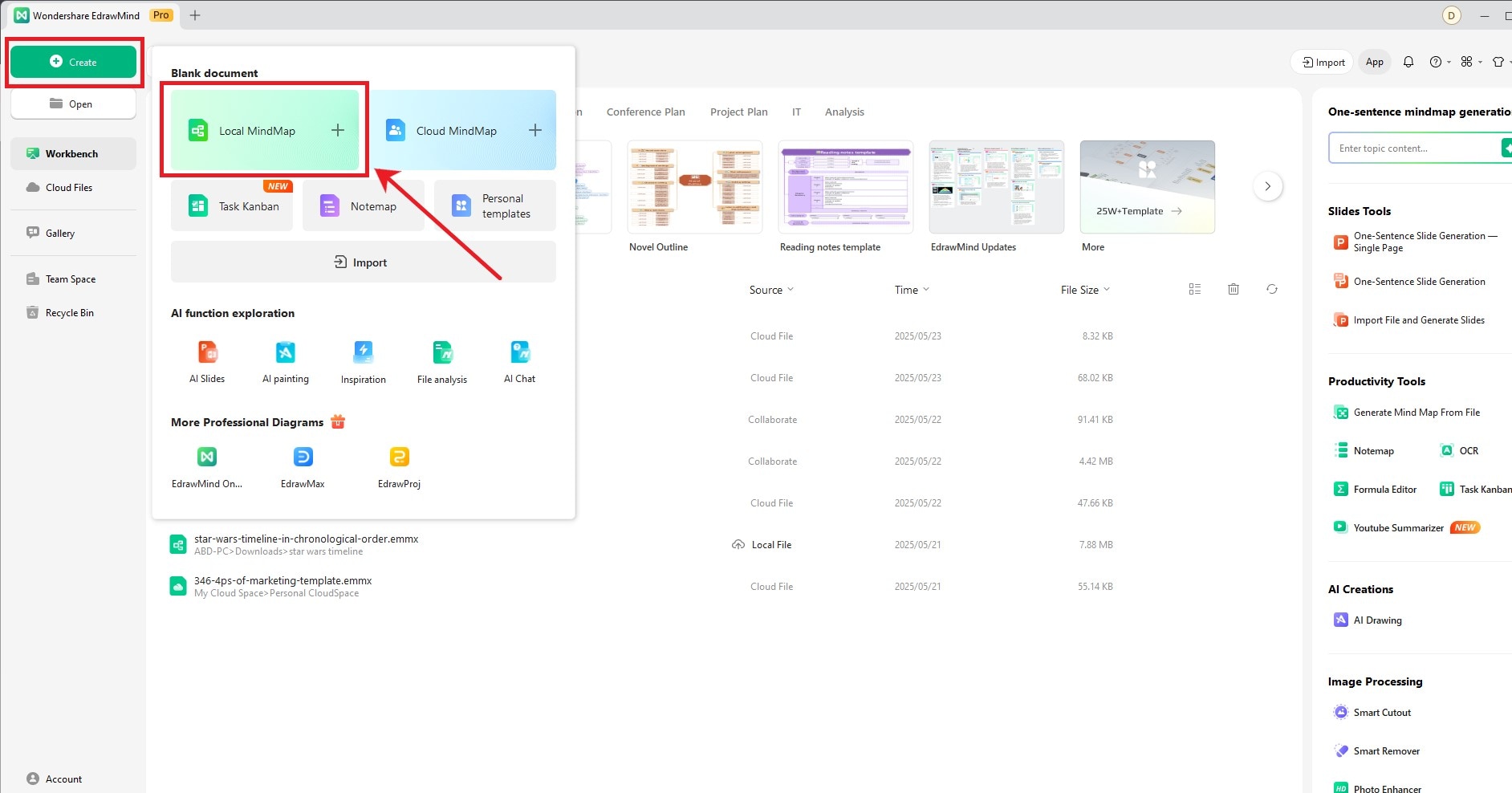
Step 2: Change the Layout
Select Main Idea. Click Layout > Timeline (down).

Step 3: Add More Topics
Select Main Idea > More > Topic. Add Subtopics for detailed entries.
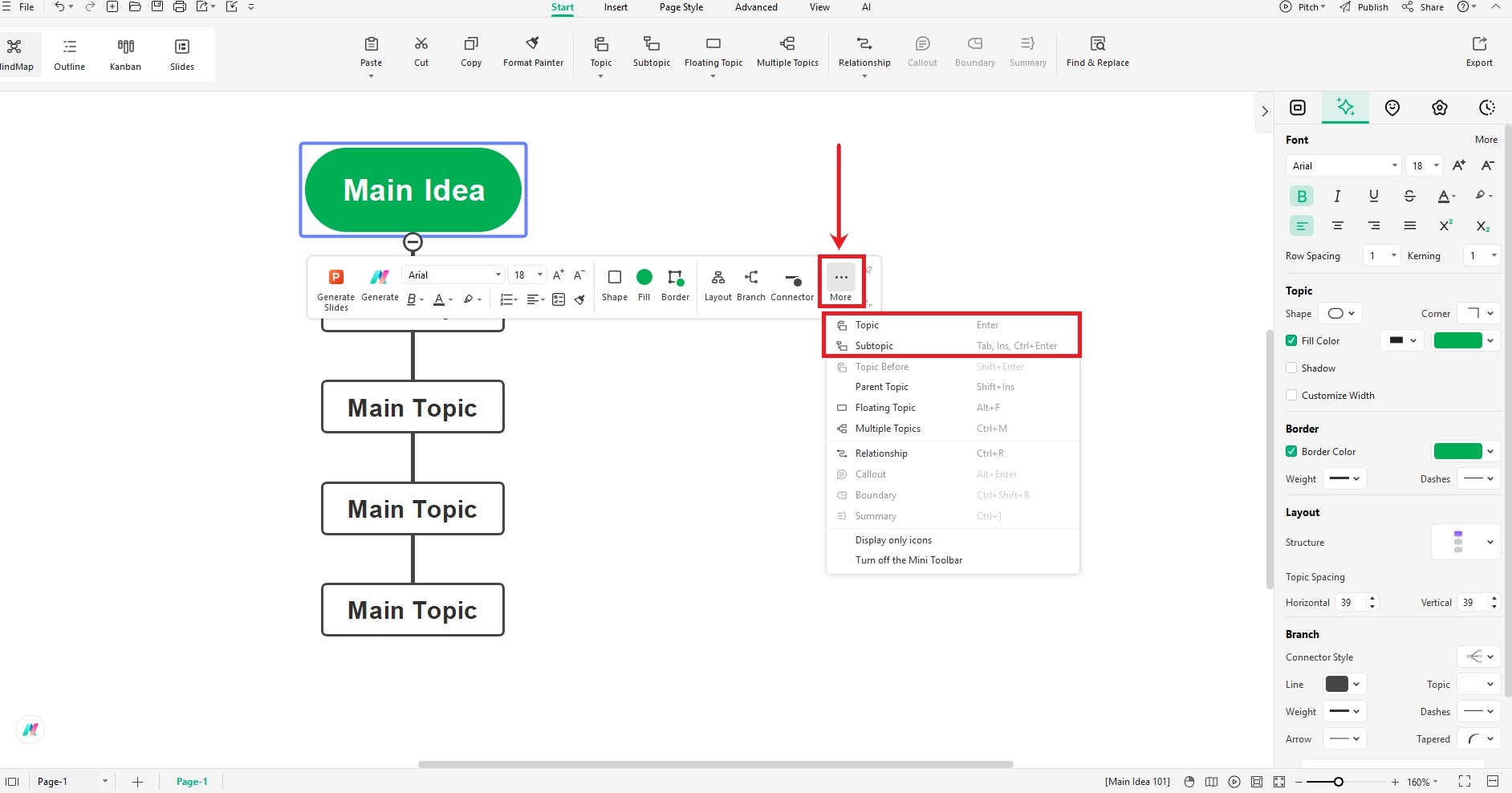
Step 4: Customize The Topics
Select topics to change colors/shapes. Double-click to edit text.
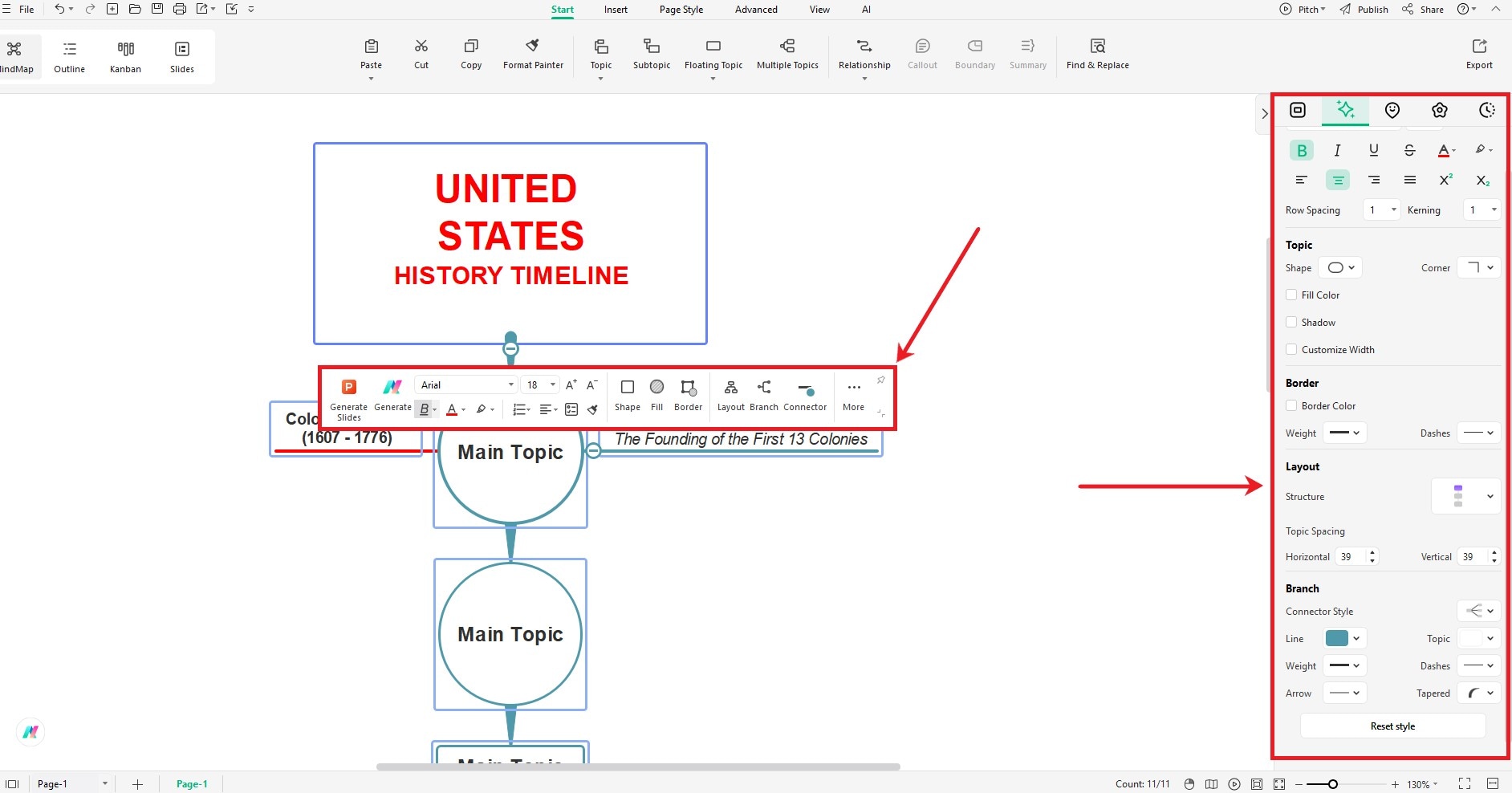
Step 5: Add Images
Download/copy images. Paste into EdrawMind and drag into topics
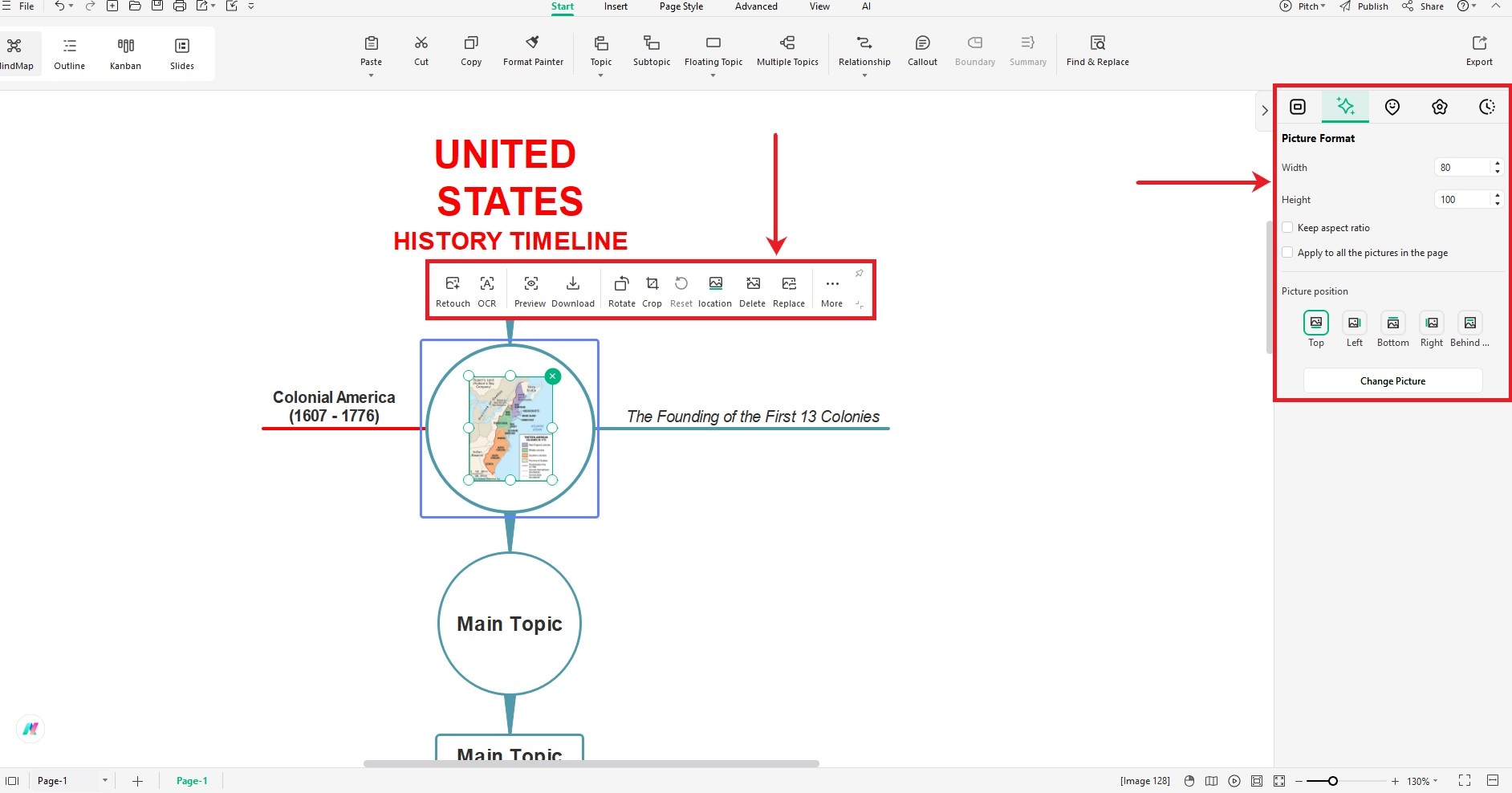
Step 6: Save or Export
Click File > Save for default format. Use Export for PNG, PDF, etc.
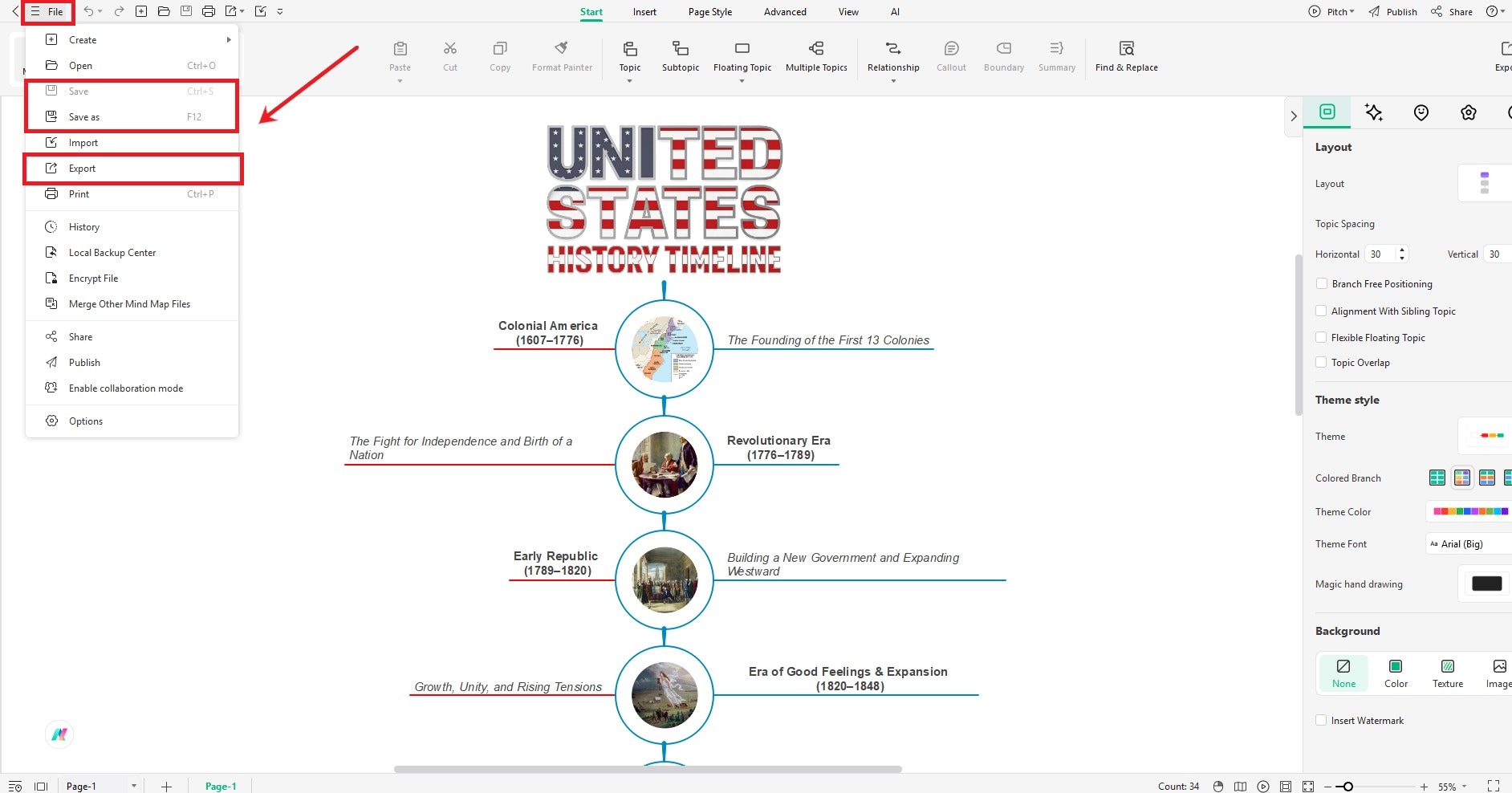
Looking Ahead: The Future of the American Story
America's story is still unfolding. From colonies to a global superpower, the U.S. has constantly evolved. But with climate change, AI, global tensions, and deep political divides, the next chapter won't be easy. The challenges are big, but so is the potential.
Will the U.S. lead on technology, equality, and sustainability, or struggle with division and decline? The answer depends on what we do now. As history shows, every choice matters. Stay curious, stay informed, and keep learning from the past to shape a better tomorrow.
And if you want to map out your historical timelines or ideas, try EdrawMind. It is a powerful, easy-to-use tool that helps you visualize history, school notes, or future goals in minutes.



